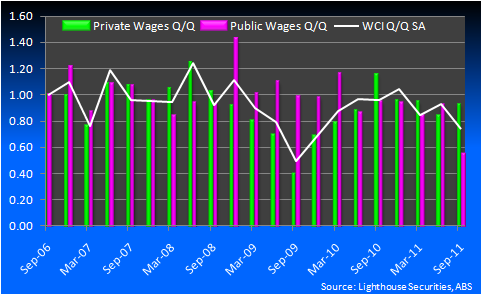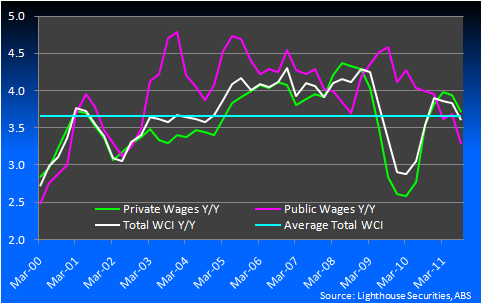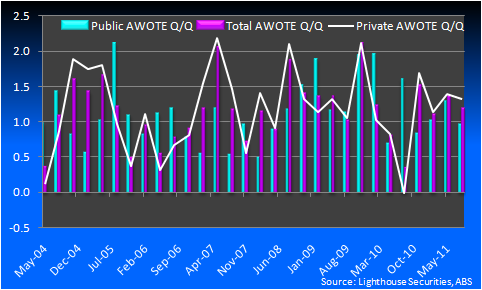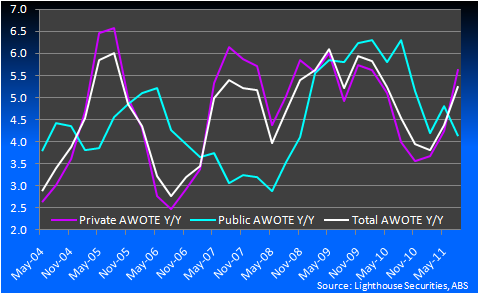So, the ABS has released its two wages reports now, Labour Price Index (WCI) yesterday and Average Weekly Earnings (AWE) today and the results show a clear slowdown in trend growth. These two measure slightly different things. The WCI is defined as:
The wage, non-wage and labour price indexes measure changes over time in the price of labour unaffected by changes in the quality or quantity of work performed. A range of procedures have been developed to identify and measure quality and quantity changes and ensure that only pure price changes are reflected in the indexes.
Whereas, the AWE represents:
…average gross (before tax) earnings of employees and do not relate to average award rates or to the earnings of the ‘average person’. AWE estimates are derived by dividing estimates of weekly total earnings by estimates of the number of employees. Changes in the averages may be affected not only by changes in the level of earnings of employees but also by changes in the overall composition of the wage and salary earner segment of the labour force.
Our first chart is the WCI quarter on quarter:

Not much room for doubt there. Downtrend in labour cost growth accelerating, as we saw in the November NAB survey. Next, year on year:

An even more obvious slowing trend and already below long terms averages for the public sector, with private soon to follow. Growth is slipping quickly below mining boom averages. Next AWE quarter on quarter:

The same downtrend. Here is year on year:

Public sector wage growth has rolled over but not yet private. However, if you look at the previous chart, the big 1.4% is going to drop out and year on year growth roll over next quarter. The AWE is also one month behind the WCI and all indicators are showing deterioration over the past six weeks.
These are not encouraging reports. Not disastrous either, but wage growth is stalling which can only mean unemployment is set to rise. I’m not sure there’s enough here to trigger a December rate cut but given income growth is such a key part of the mining boom story for the broader economy there is room for concern.
On a side note, given the slippage in wage growth has transpired in lock step with unemployment easing away from 5%, one has to say that the RBA’s Phillip’s Curve model for inflation (at least of the wages variety) has held for this mini cycle.

